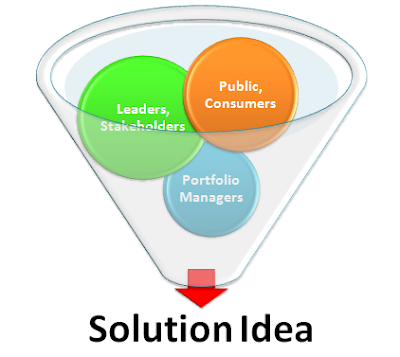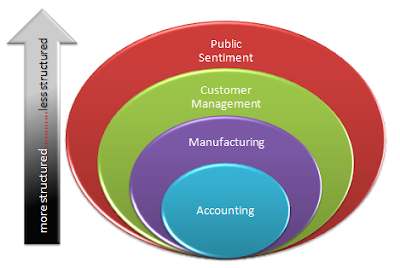The Solutionist creates
Solution Opportunities for each
Business Domain. Start by determining domains based on the organization, size, industry, and maturity of the enterprise. Opportunities have varying
spans and
structures based on these needs.
For purposes of this article, business domains have been grouped into four areas.
Note: this is not an indication of organization or system implementation but rather a grouping of functions for illustrative purposes.
- Executive, Business Intelligence, Public Relations
- Business Development, Commercial Team, Customers
- Operations
- Administrative
Opportunity Span
There are many common services that apply across most domains, for example employee access to a personal computer or telephone. Some services apply to one or two domains such as accounts payable. Some domains roll up to or integrate with other functions, thereby requiring a common architecture. Some business functions are repeatable with predictable inputs and outputs, thus easier to automate.
Opportunity Structure
Historically, administrative and operational functions have been automated through technology solutions due to their repeatability and predictability. Recent trends in technology including business intelligence, social networks, mobile devices, collaboration tools, and cloud computing provide solutions for more dynamic applications.
Break It Down!
For a large organization it is nearly impossible to map out all existing and desired solutions while assuring common services and proper integrations. But we can try!
- Inventory the high level functions for each domain
- Document solution opportunities
Example Solution Opportunity List
Executive, Business Intelligence, Public Relations
Business Development, Commercial Team, Customers
Operations
Administrative













